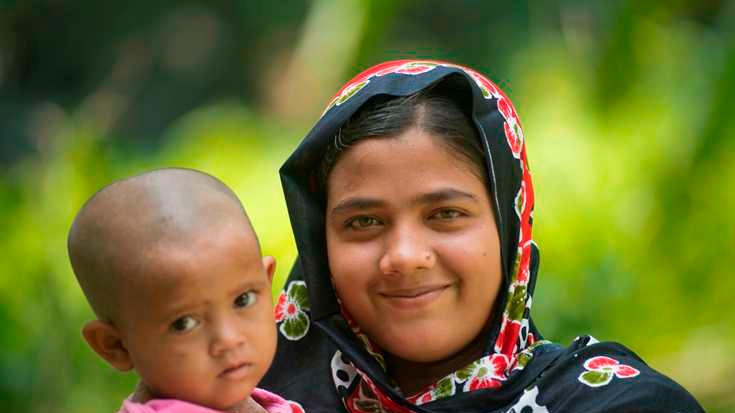Bangladesh has made remarkable progress in improving health outcomes. However, despite the progress of recent years, many in Bangladesh continue to struggle to access quality health services – negatively impacting on individuals, households; and costing the economy millions of dollars in days lost due to poor health. The Health Sector Development Program (HSDP) aims to support the commitment of the Government of Bangladesh to ensure equitable access to quality health services and to strengthen health systems with the ultimate goal to achieve better health outcomes, particularly for women, children, the poor and the marginalized.
Challenge
Bangladesh has been awarded the United Nations Millennium Development Goal Award 2010. Since 1990, child mortality rate has declined by more than two-thirds and the country is on track to reach MDG targets 4 and 5. Still, significant development challenges remain in the health sector, including the double burden of non-communicable and communicable diseases. The percentage as well as the absolute number of malnourished women and children in Bangladesh remains among the highest in the world. Added to this is the increasing and changing demand for health services, influenced by aspects such as population dynamics; urbanization and climate change. Public spending on health is low in comparison to other countries and many patients are paying out of their own pockets to access medical services - catastrophic health expenditure pushes people further into poverty.
Approach
HSDP aims to provide essential health services that improve reproductive health, from family planning and antenatal care to scaling up emergency obstetric and newborn care services and ensuring 24/7 services in selected district hospitals and upazila health centres. This is a follow-on to the long standing World Bank support for the Government’s sector wide programs in the health sector. Based on the successes and lessons learned from past programs and in recognition of the challenges ahead, the government has initiated implementation of a $8 billion sector wide program, the Health, Population and Nutrition Sector Development Program, from 2011 to 2016. The HSDP of the World Bank is fully aligned with this program, playing an important role in operationalizing commitments to improve essential health services and to strengthen the systems.
The program aligns multiple development partners to the country’s priorities in health, nutrition and population, and uses country systems for implementation and monitoring. The program also strengthens health sector planning and resource management, human resources development, management of pharmaceuticals, health information systems and maintenance of health care facilities. Further, the program will focus its support on the low performing geographic areas such as Sylhet and Chittagong.
HSDP also seeks to improve the control and treatment of both communicable and non-communicable diseases through vaccinations as well as by scaling up HIV/AIDS interventions for the most-at-risk groups, improving the quality of treatment for tuberculosis and strengthening malaria control and treatment in 13 highly endemic areas. For non-communicable diseases, HSDP aims to improve awareness of cardio-vascular disease risks, provide better diagnosis and management of diabetes and improve screening for cancer. All these services are supported by an improvement in management and budgeting, better regulatory and supervisory roles as well as decentralized local level planning.
Results in Numbers
- 40% reduction in maternal mortality, down to 194 deaths per 100,000 live births in 2010.
- 34.4% births attended by medically trained professionals in 2013, up from 21% in 2007.
- 86% of children under 23 months receiving basic vaccination in 2011, up from 81.9% in 2007.
- 2.3 children per woman in 2011 after a decade long plateau during the 1990s of around 3.3 children per woman.
- 62% contraceptive prevalence rate in 2013, up from 55.8% in 2007.
- 12,394 Community Clinics functional in 2013.
- 84% coverage of measles immunization for children under 12 months in 2011, up from 82% in 2009.
- 59% of children exclusively breastfed up to 6 months of age in 2013, up from 43% in 2007.
External funding for the HSDP includes grant of $341 million and the World Bank’s IDA credit of $359 million. The Grant funds include financing from six development partners who have pooled their finances with the World Bank: DFID, DFATD (formerly known as CIDA); KfW; Sida; UNFPA and USAID.

